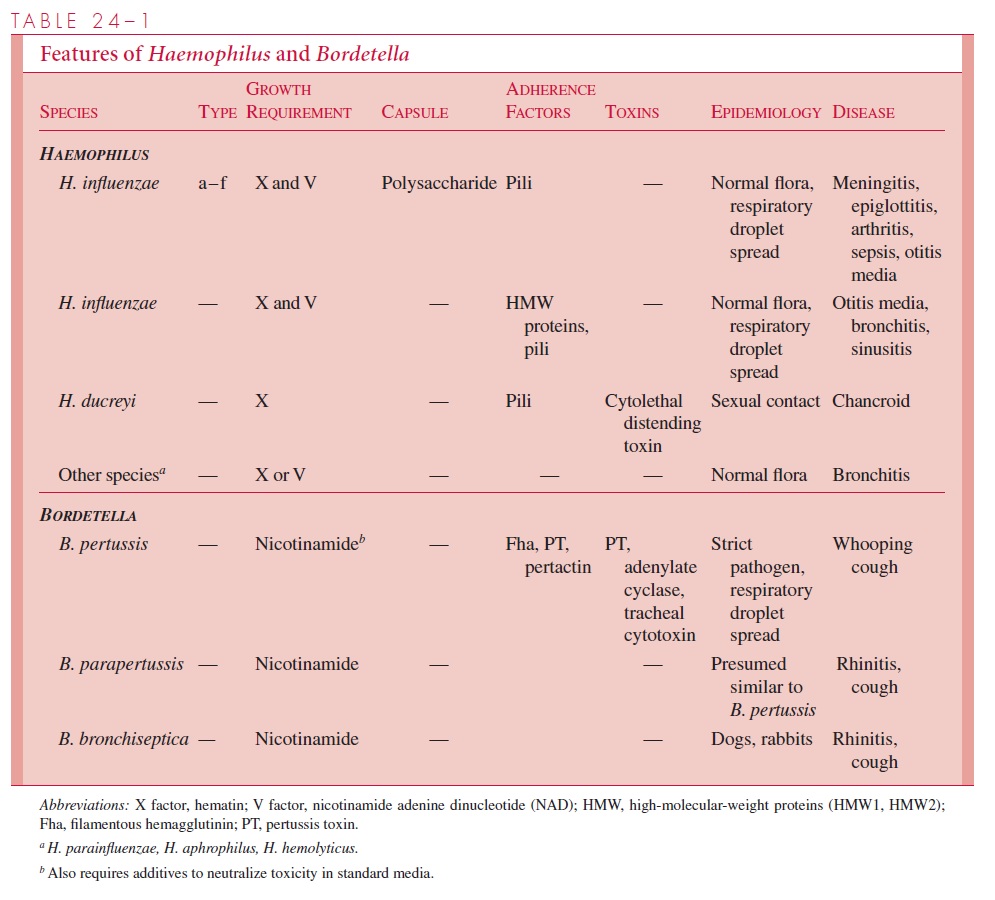Chapter: Medical Microbiology: An Introduction to Infectious Diseases: Haemophilus and Bordetella
Haemophilus
HAEMOPHILUS
Haemophilus are among the smallest of bacteria. The curved ends of the short (1.0 to1.5μm) bacilli makes many appear nearly round, hence the term coccobacilli. The cell wall has a structure similar to that of other Gram-negative bacteria. H. influenzae may have a polysaccharide capsule, but other species of Haemophilus are not encapsulated.
The cultivation of Haemophilus species requires the use of culture media enriched with blood or blood products (Greek “haema,” blood, and “philos,” loving) for optimal growth. This requirement is attributable to the need for exogenous hematin and/or nicotinamide adenine dinucleotide (NAD). These growth factors, also termed X factor (hematin) and V factor (NAD), are both present in erythrocytes. In culture media, optimal concentrations of X and, particularly, V factors are not available to Haemophilusfrom blood unless the red blood cells are lysed by gentle heat (chocolate agar) or digested and added separately as a supplement. Although erythrocytes are the only convenient source of hematin, the V factor is present in a variety of biologic sources and is produced by some other bacteria and yeasts. These conditions are responsible for the “satellite phenomenon,” in which the bac-teria form colonies on blood agar only in the vicinity of a colony of Staphylococcus that is producing V factor. The several species ofHaemophilus are defined by their requirement for X and/or V factor, CO2 dependence, and other cultural characteristics (Table 24 – 1).

Species of Haemophilus other than H. influenzae have the same biology described be-low for the nonencapsulated strains of H. influenzae. Most of these other Haemophilus species have been reported to cause systemic illness, including pneumonia, meningitis, arthritis, endocarditis, and soft tissue infections. Such cases are even more rare than those in which nonencapsulated H. influenzaecause invasive disease.
Related Topics